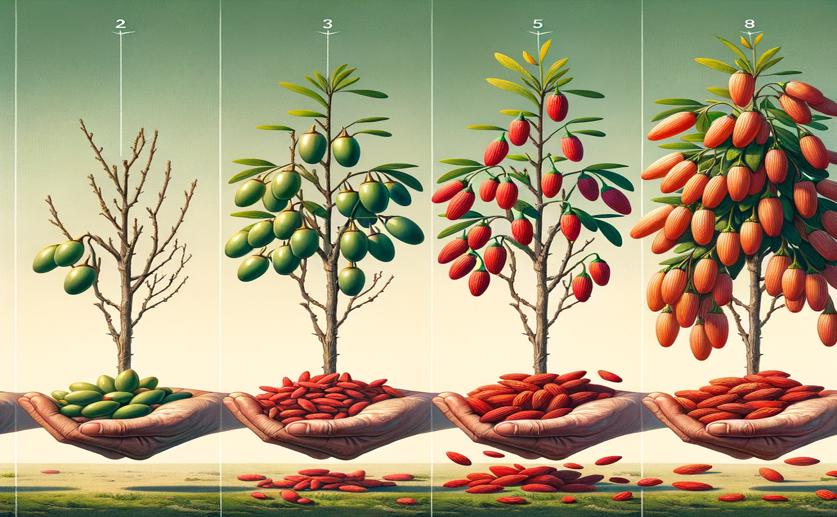
Changes in Goji Berry Toughness and Ease of Picking Over Time
Greg Howard
17th July, 2024

Image Source: Natural Science News, 2024
Key Findings
- The study was conducted in a L. barbarum plantation in Qinghai Province during the 2023 harvest period
- The separation force and hardness of L. barbarum fruits are influenced by harvesting time, fruit variety, and maturity level
- Ningqi No.1 is best harvested in the late afternoon and evening (17:00-21:00), while Ningqi No.7 shows optimal results when harvested in the morning (7:00-9:00)
FruitsAgriculturePlant Science
References
Main Study
1) Temporal changes in Lycium barbarum fruit separation force and hardness during selective harvesting.
Published 16th July, 2024
https://doi.org/10.1111/1750-3841.17253
Related Studies
2) When Is the Right Moment to Pick Blueberries? Variation in Agronomic and Chemical Properties of Blueberry (Vaccinium corymbosum) Cultivars at Different Harvest Times.
3) Mechanical harvesting at dawn in a super-high-density table olive orchard: effect on the quality of fruits.
4) Relationship between the firmness of Golden Delicious apples and the physicochemical characteristics of the fruits and their pectin during development and ripening.
5) Elevated CO2 Enhanced the Antioxidant Activity and Downregulated Cell Wall Metabolism of Wolfberry (Lycium barbarum L.).



 29th May, 2024 | Greg Howard
29th May, 2024 | Greg Howard